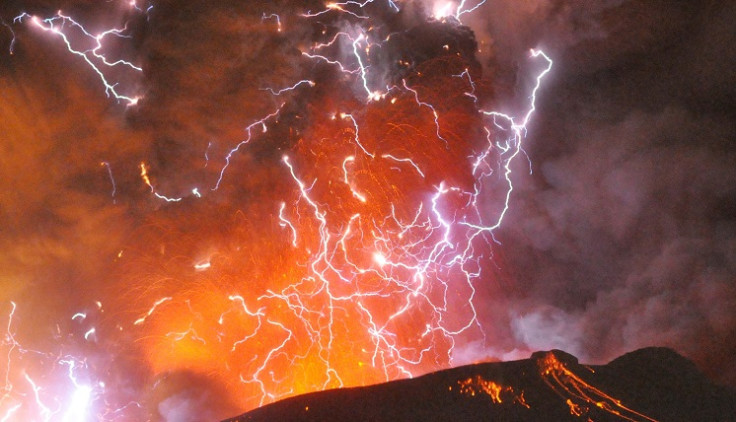Supervolcano Eruption Large Enough 'To Destroy Civilization' More Likely Than First Thought
Supervolcanos can erupt spontaneously without earthquake triggers, say scientists

Researchers say the eruption of a "supervolcano" – which has the potential to destroy civilisation as we know it – is more likely to occur than previously thought.
Scientists said that a supervolcano – which is 100 times more powerful than regular volcanoes – can erupt without any external triggers such as an earthquake.
According to the seismology research team at ETH Zurich, the sheer volume of molten lava held in the volcano's magma chamber means that magma could break through the Earth's crust spontaneously, if pressure builds up.
The eruption of a supervolcano is considered the biggest natural catastrophe threat on Earth, after the impact of a giant meteorite. While these events are extremely rare, occurring on average about once every 100,000 years, each one drastically changes the climate and ecology of the Earth.
The last known supervolcano eruption was believed to have been at Lake Toba in Sumatra, Indonesia, 70,000 years ago. The eruption was thought to have plunged the planet into a "volcanic winter" of six to eight years, with surface temperatures falling between 3C and 5C (37F-41F).
The study, published in the journal Nature Geoscience, identified a trigger for supereruptions by determining the density of supervolcanic magma, using an X-ray machine at the European Synchrotron Radiation Facility (ESRF) in Grenoble, France.
Using magma from the caldera in the dormant supervolcano in Yellowstone National Park, in the US, scientists ran tests to see how the magma would respond to changes in pressure and temperature.
By using a powerful X-ray beam, the team discovered density of the magma decreased significantly at high temperatures and pressures experienced underground.
Density variations between the magma and the surrounding rock means lava held in the caldera can produce enough force to break through the Earth's crust, effectively 'exploding' as opposed to erupting.
"The difference in density between molten magma in the caldera and the surrounding rock is big enough to drive magma from the chamber to the surface," says Dr Jean-Philippe Perrillat of the National Centre for Scientific Research in Grenoble.
"The effect is like the extra buoyancy of a football when it is filled with air underwater, which forces it to the surface because of the denser water around it," Perrillat said.
"If the volume of magma is big enough, it should come to the surface and explode like a champagne bottle being uncorked."
The tests were possible because the machine at Grenoble can take density measurement temperatures of up to 1,700C and pressures 36,000 times greater than normal atmospheric pressure.
Prof Carmen Sanchez-Valle, of ETH Zurich, adds: "Our research has shown that the pressure is actually large enough for the Earth's crust to break. The magma penetrating the cracks will eventually reach the Earth's surface, even in the absence of water or carbon dioxide bubbles in the magma. As it rises to the surface, the magma will expand violently, which is the well-known origin of a volcanic explosion."
Scientists say no known supervolcanos are expected to erupt in the foreseeable future, but warned of 'devastating consequences' when one does.
"This is something that, as a species, we will eventually have to deal with," says Wim Malfait, first author of the study.
"You could compare it to an asteroid impact – the risk at any given time is small, but when it happens the consequences will be catastrophic."
© Copyright IBTimes 2025. All rights reserved.






















